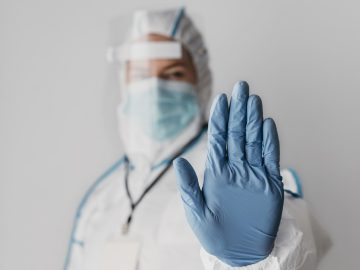Home Collection Call 0484 406 3331, 0484 406332
Haematology is the study of the morphology and physiology of blood. The haematology laboratory is a healthcare setting concerned for, diagnose and monitor diseases in the blood and blood-forming organs. Different blood tests that carried out by biomedical researchers working in a haematology lab to examine the cellular components of blood and proteins, such as haemoglobin and clotting factors. Haematological tests are performed on blood samples to diagnose diseases such as leukaemia, anaemia, and difficulties of blood coagulation.
Biochemistry, sometimes called biological chemistry, is the study of chemical processes within and relating to living organisms. By controlling information flow through biochemical signaling and the flow of chemical energy through metabolism, biochemical processes give rise to the complexity of life.
Immunochemistry is a branch of chemistry that contains the molecular mechanisms underlying the function of the immune system, especially the nature of antibodies, antigens, and their interactions. Immunochemistry can study from the aspect of using antibodies to label epitopes of interest in cells or tissues.
Microbiology is the study of tiny organisms, whether they have cells or not, and how they contribute to human illness. The human microbiome, cancer, and tumour microenvironment are additional topics covered by microbiology.
As a result of cancer or some benign (noncancerous) disorders, tumours and other cells in the body create compounds known as tumour markers. Some cancer patients’ tissues or bodily fluids, including their blood, urine, stool, tumour tissue, and other tissues, may include these chemicals. Typically, tumour indicators are proteins. But tumour markers are now also being utilised to identify patterns in gene expression and DNA alterations. It is possible to discover tumour markers to diagnose and treat several types of cancer. An increased level of tumour markers can indicate the presence of cancer, but cancer cannot be diagnosed solely based on this information.
The infertility marker diagnosis includes surgical procedures such as diagnostic laparoscopy, endometrial biopsy, testicular FNAC, and testicular biopsy. It also includes non-surgical procedures such as semenogram, semen culture, determining immunological causes of infertility, post-coital test, sperm-mucus interaction, and estimating blood levels of reproductive hormones.
A blood test that looks for high levels of inflammatory cytokines can be used as an accurate predictor of diabetes in still-healthy people, years ahead of the traditional risk factors of obesity or insulin resistance.
The medical specialty of cardiology focuses on conditions and disorders of the heart. The field includes medical diagnosis and treatment of congenital heart defects, coronary artery disease, heart failure, valvular heart disease, and electrophysiology.
Pathology deals with the examination of organs, tissues, and bodily fluids to make a diagnosis of a disease. Pathology examines the causes, mechanisms, and extent of disease. A general pathologist should have experience in clinical Chemistry, Microbiology, and Haematology and be knowledgeable about all facets of laboratory analysis.
MRI scanning is a powerful medical diagnostic tool that uses a strong magnetic field to produce high-quality images in multiple planes or directions. Imaging is to be seen and not heard. To effectively reduce noise, the cause of the noise – sharp gradient switching – has been addressed directly in a digital 1.5T silent MRI.
The Optima CT660 system helps you deliver highly competent, personalized care. You get fast, high-quality acquisition at optimized doses for patients young and old, large and small, across a large spectrum of procedures: cardiac, angiography, brain, chest, abdomen, orthopedic and more.
3D ultrasound is a medically used ultrasound method often used in obstetric ultrasonography (during pregnancy), providing three-dimensional images of the fetus.
4D fetal ultrasounds are similar to 3D scans, with the difference associated with time: 4D allows a 3-dimensional picture in real-time, rather than delayed, due to the lag associated with the computer-constructed image, as in classic 3-dimensional ultrasound.
A Doppler is a noninvasive test to estimate the blood flow through blood vessels. A doppler test may also help your doctor check for injuries on your arteries or monitor necessary treatments for your veins and arteries.
Digital radiography is a form of the X-ray imaging method. This method uses digital X-ray sensors instead of traditional photographic film. Advantages include time efficiency through bypassing chemical processing and the ability to transfer and enhance images digitally.
Treadmill test (TMT) or exercise stress test is one of the common forms of stress tests used to induce provokable myocardial ischemia for the diagnostic evaluation of coronary artery disease. In a treadmill test, the subject walks on a treadmill as per the protocol of the tests. The heart rate and blood pressure are monitored continuously, along with a 12-lead ECG with computerised ST and arrhythmia detection algorithms.
MDCT is a noninvasive test that uses X-rays to make pictures of your heart. Modern MDCT scanners work very fast and are very detailed. They can take images of the heartbeats and show blockages in your heart’s arteries. With contrast dye, MDCT can also be used to check the congenital heart and the working condition of the ventricles. Without contrast dye, MDCT can use to measure the amount of calcium in the heart arteries.
Electrocardiography records a heart’s electrical signals over time using electrodes placed on a patient’s body. These electrodes detect the tiny electrical changes on the skin that arise from the heart muscle depolarizing during each heartbeat.
Cardiac MRI is the test used to diagnose and assess many heart-related diseases and conditions. Cardiac MRI can help explain results from other tests, such as X-rays and computed tomography scans. Doctors sometimes use cardiac MRI instead of invasive procedures or tests that involve radiation or dyes containing iodine.
It is a test that uses ultrasound to image the heart. It can also display a cross-sectional “slice” of the heart’s beating, including the chambers, valves, and major blood vessels that exit from the left and right parts of the heart.

